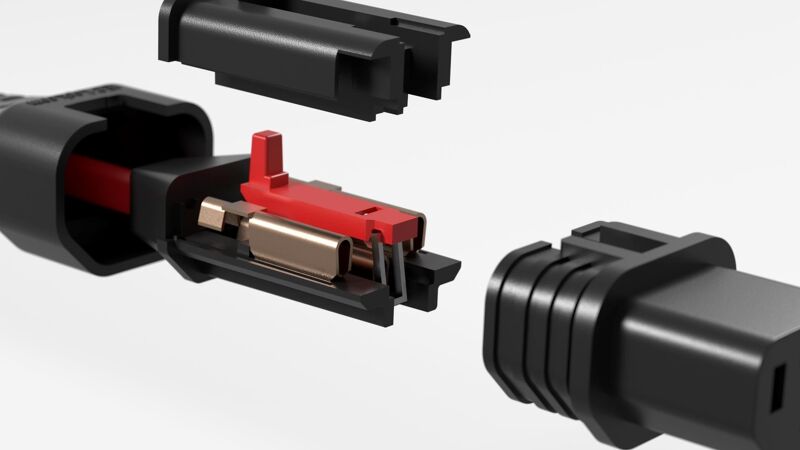
Contents hide
IEC connectors (International Electrotechnical Commission standard) are ubiquitous in electrical and electronic applications. Their durability directly impacts safety, performance, and cost-effectiveness. Below is a detailed technical evaluation of IEC connector durability factors.
🔧 Key Durability Factors
1. Mechanical Durability
- Mating Cycles: Standard IEC connectors typically guarantee 1,500–10,000 insertion/removal cycles (e.g., IEC 60320 C13/C14 connectors average 5,000 cycles).
- Insertion Force: Higher-quality connectors maintain smooth insertion/extraction even after thousands of cycles (~30–50 N insertion force).
- Housing Material:
- Thermoplastic (UL94V-0 rated) → Resistant to impact and deformation.
- Metal Shell (Stainless Steel/Aluminum) → Better strain relief and temperature resistance.
2. Electrical Durability
- Contact Resistance: Should remain low (<10 mΩ) to prevent overheating over time.
- Current Rating Degradation: Repeated cycling may loosen contacts, reducing maximum current handling (e.g., 10A rated connector degrading to 7A after prolonged use).
3. Environmental Durability
- IP Rating:
- IP20: Basic dust resistance (indoor use).
- IP67/IP68: Waterproof/resistant (medical/industrial applications).
- Temperature Range: Commercial-grade IEC connectors handle -25°C to +70°C, industrial variants exceed -40°C to +105°C.
4. Corrosion Resistance
- Gold-Plated Contacts → Best for corrosion prevention (~50% longer lifespan than tin-plated).
- Nickel-Plated Contacts → Cost-effective but vulnerable to oxidation over time.
📊 Durability Comparison by IEC Type
| Connector Type | Mating Cycles | Max Current | Best Use Case |
|---|---|---|---|
| IEC 60320 C13/C14 | 5,000–10,000 | 10A–16A | Computers, servers |
| IEC 60309 (Industrial) | 10,000+ | 16A–125A | Heavy machinery, outdoor |
| IEC 63171 (New M12 Alternative) | 50,000+ | 6A–16A | Automotive, rugged IoT |
| IEC 61076 (Hybrid Connectors) | 5,000–15,000 | 20A–40A | Medical devices |
⚠ Common Failure Modes
- Contact Arcing/Wear: Leads to increased resistance and overheating.
- Strain Relief Failure: Repeated bending causes internal wire breaks.
- Thermal Degradation: Overheating melts plastic housings.
- Corrosion-Induced Failures: Moisture ingress degrades conductivity.
✅ How to Improve IEC Connector Lifespan
- Use Strain Reliefs: Prevent cable pull-out damage.
- Avoid Frequent Plugging/Unplugging: Use locking mechanisms for semi-permanent installations.
- Select High-Temp Materials: For environments exceeding 70°C.
- Implement Redundancy: Critical systems (e.g., servers) should have backup connectors.
📡 Emerging Trends
- Smart Connectors: Sensors detect wear (e.g., TE Connectivity’s predictive maintenance-enabled IEC).
- Hybrid Power+Data IEC: Combining USB-C & power delivery in standardized plugs.
- High-Cycle-Rated Materials: New PPS (Polyphenylene Sulfide) polymers increase mating cycles beyond 50K.
🔬 Lab Testing Standards
- IEC 60512: Tests insertion force, electrical continuity.
- UL 1977: Evaluates flammability and thermal stress.
- MIL-STD-1344: Military-grade shock/vibration tests.
Need help selecting high-durability IEC connectors? Share your application specs—I’ll recommend optimal solutions! ⚡🔌


